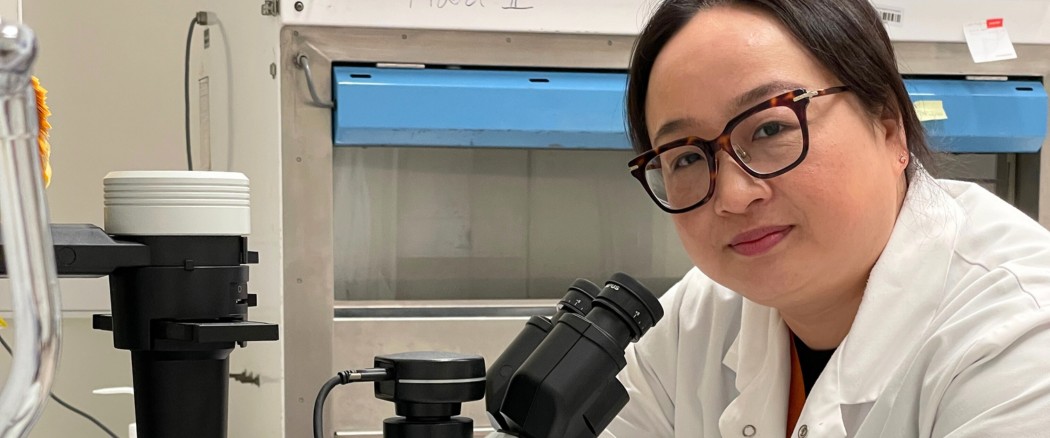
AVR Priming Grant – Funded 2022
Project Title:
Develop novel therapy for human Uveal Melanoma
Chief Investigator:
A/Professor Fan Fan Zhou
Co-Investigators:
A/Prof Robert Max Conway, A/Prof Svetlana Cherepanoff
Aim
This project aims to investigate the cell killing mechanism and molecular target of NM2, a novel lead molecule identified by us, in the treatment of human Uveal Melanoma.
Methods
We explored the pharmacological characteristics of NM2 in four immortalised Uveal Melanoma and three patient tumor-derived cell lines. Our research methods include western blot, siRNA silencing, chemical inhibitor treatment, cell viability assays, flow cytometry etc.
Key results
We found that the anti-cancer action of NM2 is eIF2α.
Implications for Clinical Practice/Science and Future Research
This study revealed the molecular mechansims underpinning the anti-cancer effect of NM2 in human Uveal Melanoma. NM2 is a compound synthesized in our laboratory, which has superior anti-cancer potency in Uveal Melanoma. Our further research found that it kills Uveal Melanoma tumour cells via specific cell death mechanism. And our investigation also identified Ephrin receptor/ephrin signaling is possibly the molecular target of NM2. Such findings suggested that Ephrin receptor/ephrin signaling may be a novel therapeutic target of Uveal Melanoma. Considering there is no effective drug treatment available for this rare but deadly cancer at present, our findings suggested a new therapeutic strategy in the treatment of RIPK1-dependent and – related. We also found that several ephrin receptor isoforms are specifically involved in the anti-cancer activity of NM2 in the treatment of Uveal Melanoma. Uveal Melanoma. NM2 is warranted to be further investigated for its clinical application against this disease.
Lay summary of outcomes
Uveal melanoma (UM) is the most common eye cancer without effective treatments. Our novel agent NM2 shows high potency in treating UM. This project explored the mechanism of action of NM2 and proved its clinical potentials in the treatment of UM.